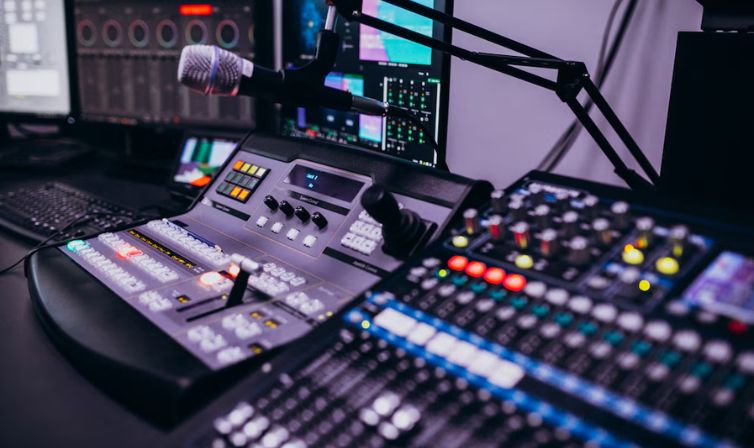Why Smart Companies Don’t Leave AV to the Venue
21 April 2025
6 Mins Read

toc impalement
If you’ve ever been to a conference where the mic cuts out mid-presentation or the screen flickers like a dying flashlight powers it, you already know what’s at stake.
When the audio or visuals don’t work, your message gets lost, your speakers get flustered, and your audience tunes out. It’s awkward at best, costly, unprofessional, and avoidable at worst.
That’s why experienced planners bring in their AV partners instead of defaulting to the in-house option. Companies that care about their perception don’t just take what the venue offers.
They bring in people like Toronto Audio Visual Rentals, who specialize in ensuring that everything actually works—and works well.
Good Event, Bad AV: Don’t Let It Happen to You

Savvy companies—those that care about impact, brand reputation, and long-term thinking—know that putting AV in the venue’s hands is a risk they can’t afford to take. Here’s why they take the extra step to work with dedicated AV companies rather than just checking the box.
Here’s the thing about in-house AV: it’s not there for you. It’s there for the venue. It exists to be convenient, not excellent.
You’re usually dealing with a rotating cast of techs, limited gear options, and cookie-cutter setups that are rolled out regardless of your event needs.
You might be promised support, but often, someone shows up, plugs in a few cables, and disappears until the end of the day.
An external AV team is the opposite. The team walk in with a plan and a full inventory tailored to your event, not just the space.
They talk to you about the flow of the program, what the presenters need, how the lighting should feel, and how the sound should carry. The team will run rehearsals. They test the feed.
They have backups. And if something does go sideways, they’re not off-site or unreachable. They’re standing right there, fixing it before anyone in the audience notices. That’s why three-quarters of professional event planners in this study intend to allocate the same or increased budgets for AV.
What In-House AV Won’t Tell You

There’s also the financial side, which people don’t always realize until it’s too late. In-house AV contracts often come with markup fees, package minimums, and restrictions that can sneak into your budget and chew through it fast.
It is not unusual to pay double for less equipment, service, and control. Bringing your AV partner might be an extra cost upfront, but it usually saves money overall. And the peace of mind? Worth every penny.
1. Customization and Creative Control: Building the Experience, Not Simply Providing It
In-house AV installations are meant to be functional, not inspirational. They cater to a wide audience with generic packages, often constructed around minimum needs: a podium mic, a projector, and a simple sound system.
But today’s events require more—so much more.
Whether dynamic LED walls, synchronized lights, immersive sound zones, virtual reality integration, or interactive poll-of-the-room audience engagement, today’s attendees want more than a slideshow.
Brands with established identities demand AV configurations that embody their singularity, whether in the light’s colour temperature or the sound’s reactiveness during a keynote reveal.
- Example: When Tesla introduces a new model, it doesn’t use hotel projectors and generic lighting—it builds cinematic, immersive spaces where the AV is an integral part of the narrative.
2. Cost Transparency and Avoiding the “Venue AV Tax”
Venue AV services are usually packaged into event packages with little explanation and high markups. These include:
- Labor surcharges for basic setup
- Outside AV vendor use fees (referred to as “corkage fees”)
- Hourly technician fees
- Aging equipment rental fees
- Exaggerated day-of-service fees
- Convenience turns into a budget blowout in the blink of an eye.
Shrewd planners negotiate individual AV deals independently of the venue, acquiring transparency, line-item detail, and the option to shop competitive quotes.
Contrary to myth, third-party AV suppliers are generally less expensive in the end—particularly when considering higher quality, dependability, and service.
- Inside secret: A few venues incentivize their salespeople to promote in-house AV, earning a commission on what customers pay. That’s a business model—it’s not a service.
3. Better Technology and Ongoing Innovation
AV departments in venues typically work with old inventory, kept just operational enough to continue functioning. Turnover on equipment upgrades is low since their priority is operational efficiency, not innovation.
Independent AV partners are innovation-first, however. They invest in cutting-edge technology to remain competitive, including:
- 4K/8K projectors
- Digital mixing consoles
- Beamforming microphones
- Wireless collaboration tools
- Virtual & augmented reality staging
- Bespoke scenic and projection mapping solutions
By working with a specialized AV company, businesses can access superior tools—not yesterday’s technology.
- Case in point: A medical conference broadcasts live surgeries to international viewers with state-of-the-art video and AR overlays—something an in-house venue staff could never have accomplished with their limited bag of tricks.
4. Dedicated Project Management and On-Site Technical Support
Venue AV personnel generally have multiple clients and events, with little leeway when problems occur. Usually, their work is restricted to setup and teardown, with minimal on-site support during the event itself.
Conversely, outside AV providers dedicate a project manager and technical crew who are engaged from pre-production to post-event evaluation. They make site visits, test contingency plans, and even stage rehearsals of show flows with speakers.
This hands-on method guarantees that the crew knows not only the gear but also the intent behind each cue, video, and light adjustment.
- Real-world example: At a Fortune 100 leadership conference, a CEO’s teleprompter malfunctioned a few minutes before live time. The external AV crew, planning for redundancy requirements, had a mirrored setup triggered immediately, preventing a PR disaster.
5. Consistency Across Events and Venues
When organizations plan a series of events—a multi-city roadshow, yearly sales meetings, or international summits—coordinating with venue-specific AV involves grappling with disparate standards, teams, and results. This risks compromising brand consistency.
Outside AV companies provide scalability and standardization. They duplicate effective designs between venues, produce brand-consistent images, and enable companies to increase production value as the event strategy develops.
- Example: An AV company with one global partner at five international conferences guaranteed that each keynote, demo, and breakout session shared the same technical quality, branding, and audience experience.
6. Strategic Partnership, Not Just Technical Execution
AV is not about plugging in cables but supporting business objectives. Do you want to impress investors? Engage audiences? Create social media buzz?
External AV teams become actual partners in strategy and execution. They pose the correct questions:
- What’s the essential message?
- What should the audience be feeling?
- What are the most important moments we must amplify?
This approach results in wiser layouts, compelling visuals, seamless transitions, and a much more impactful outcome than venue-based AV can provide.
Mic Check: Who’s Running Your Show?
Let’s talk optics. When your CEO steps on stage and the mic is crystal clear, the slides change smoothly, and the lighting makes them look like they belong on a TED Talk, people notice.
It feels intentional. Professional. That impression sticks. The reverse is also true. If the AV feels like an afterthought, the whole event does. And fair or not, people associate that with your brand.
This isn’t about being flashy. It’s about creating an experience that respects your audience’s time and attention. Surveys have shown that 81% of event attendees rated main stage audio equipment as an enhancement to the event experience.
Whether it’s a product launch, a shareholder meeting, or a team retreat, good audiovisual equipment helps you communicate clearly and confidently. Bad audiovisual equipment distracts, distorts, and derails.
The AV Decision That Separates Pros from Amateurs
The best AV teams aren’t just pressing buttons. They’re part of your event crew. They understand what you’re trying to achieve and care about helping you pull it off.
They plan, troubleshoot, and care about angles, acoustics, and ambience; when the event starts, they’re laser-focused on ensuring everything goes right.
Smart companies know that AV can make or break an event. That’s why they bring in professionals they trust, not just whoever happens to be tied to the venue contract.
You’re putting time, energy, and money into this event. Don’t leave the one thing that carries your message to chance.
Yes, it’s easy to fall back on what’s convenient. Employing the venue’s AV staff appears to be a plug-and-play solution.
But when the stakes are high—when impressions need to be made, brands can be lost, and ROI is at stake—thinking companies recognize that they require more than a sure thing. They require a strategic partner who lives and breathes impeccable execution.

















